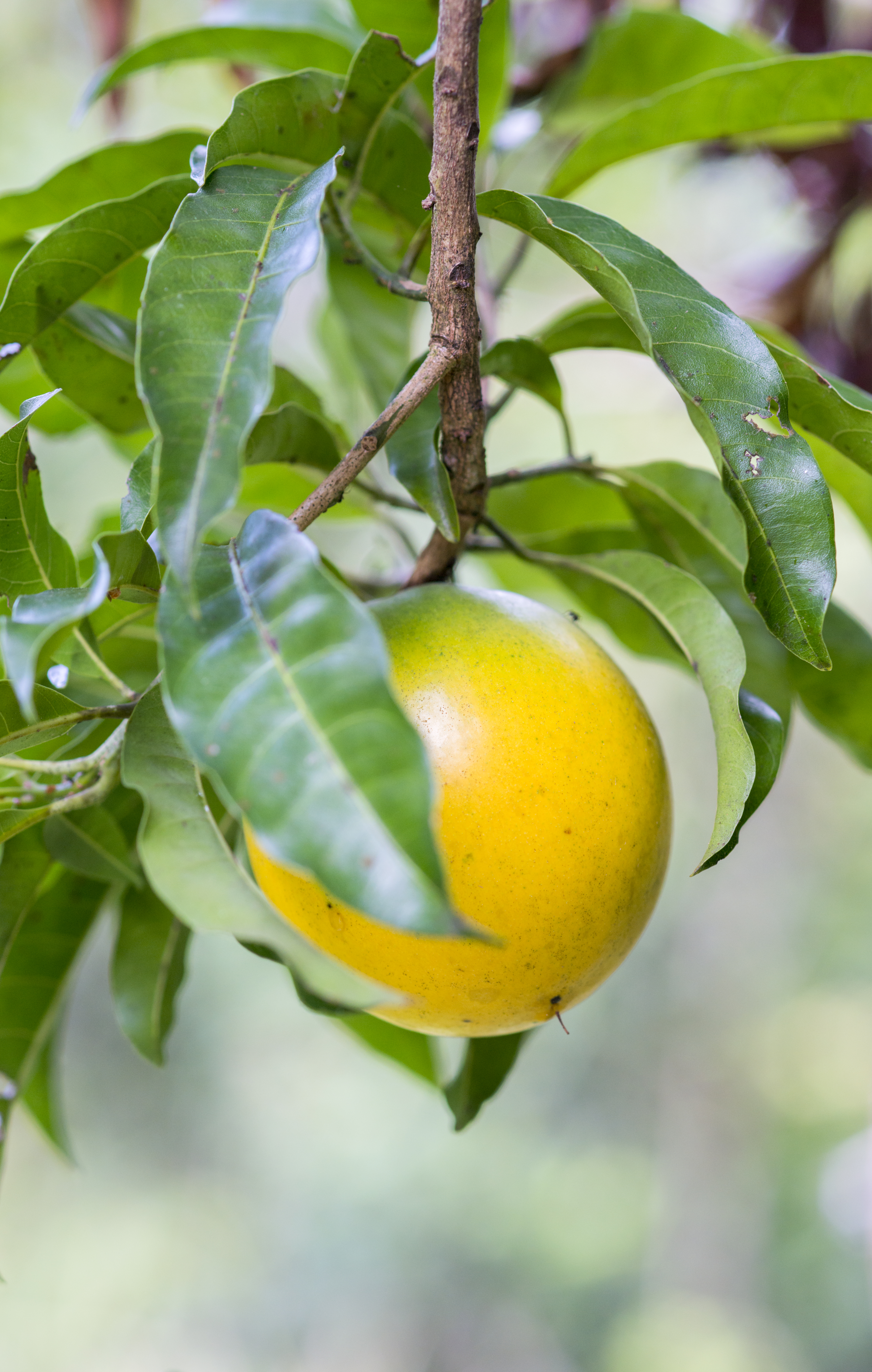Abiu
(Pouteria caimito)

Description
Pouteria caimito, the abiu, is a tropical fruit tree originated in the Amazonian region of South America. It grows to an average of 33 feet (10 m) high, and can grow as high as 116 feet (35 m) under good conditions. Its fruits' shape varies from round to oval, pointed at the distal end. When ripe, it has smooth, bright yellow skin and has one to four ovate seeds. The inside of the fruit is translucent and white. It has a creamy and jelly-like texture and its taste is similar to the sapodilla — a sweet caramel custard. The abiu tree is part of the family Sapotaceae and is very similar in appearance to the canistel. P. caimito is commonly considered to be native to the headwaters of the Amazon. It grows wild in the lower eastern part of the Andes from southwestern Venezuela to Peru. It also grows around Tingo Maria and Iquitos, Peru, and it can commonly be found in the Province of Guayas in Ecuador, where it is sold in the markets. The abiu was cultivated by Amerindians and it became widespread in the Amazon, but the origins of the fruit's distribution outside the Amazon is uncertain. In the Amazon basin, it is found to grow heavily in the northern Brazilian state of Pará, but is also found sparsely in collections from the Atlantic rainforest near Rio de Janeiro and Bahia. It can also be found in Colombia in areas such as the regions of Caquetá, Meta, and Vaupes and it is very plentiful in Amazonas, Venezuela. It has also been growing for a very long time in Trinidad. The abiu grows best in areas that have a year-round moist and warm climate. It can now be found throughout most of the Amazon basin. It is a common dooryard tree in the backyards and streets in the city of many Brazilian towns, but it is not usually grown commercially. It has also been introduced outside of the Americas; for example, it is grown on the Pacific island of Tahiti since 1993. The abiu habitats are nearly all tropical. It thrives in a place that has a year-round warm and moist climate, although it has been known to grow well in Rio de Janeiro, which is a somewhat cooler climate. In Peru, it cannot grow above 2,000 feet (610 m) feet in elevation, but in Colombia, it has been found growing up to an elevation of 6,000 feet (1,800 m). The leaves of P, caimito range from oblong to elliptical. They can be 4-8 in (10-20 cm) in length and 1.5-2.5 in (3.5-6.5 cm) in width. The flowers on the tree may occur either single or in clusters of two to five flowers.
Taxonomic tree:







